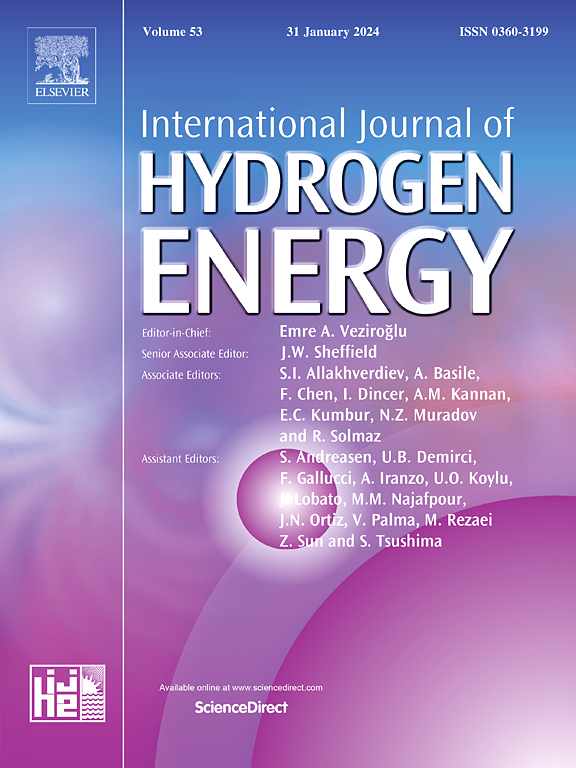Numerical modeling of the transport mechanism of NH3/H2 mixtures in nanoporous materials
IF 8.1
2区 工程技术
Q1 CHEMISTRY, PHYSICAL
引用次数: 0
Abstract
Understanding the nanotransport properties of NH3 and H2 is critical for designing adsorption and separation materials. In this work, we develop a novel numerical model at the molecular level by incorporating the M − S approach and effective medium theory, and provide a rigorous and analyzable simulation implementation for a binary transport system of NH3 and H2. In addition, the effect of pore length nonuniformity is simultaneously incorporated. The results show that high temperatures and large radii are detrimental to adsorption but favorable for diffusion at the single-pore scale, while the greater conductance increase in large pores dominates the fluid transport property in the pore network. The existence of a pore length distribution can induce greater effective diffusivity and lower apparent tortuosity within the pore network. Moreover, we confirm that at 300 K, the equilibrium selectivity of NH3 over H2 reaches approximately 28 in a uniform pore network with a pore radius of 0.25 nm, indicating the feasibility of nanoporous silica materials for use in adsorption separation of NH3 and H2 mixtures.

了解 NH3 和 H2 的纳米传输特性对于设计吸附和分离材料至关重要。在这项工作中,我们结合 M - S 方法和有效介质理论,在分子水平上建立了一个新颖的数值模型,并为 NH3 和 H2 的二元传输系统提供了严谨、可分析的模拟实现。此外,还同时纳入了孔隙长度不均匀性的影响。结果表明,在单孔尺度上,高温和大半径不利于吸附,但有利于扩散,而大孔隙中更大的传导增加则主导了孔隙网络中的流体传输特性。孔隙长度分布的存在会使孔隙网络中的有效扩散率更高,表观迂回度更低。此外,我们还证实,在 300 K 时,在孔半径为 0.25 nm 的均匀孔隙网络中,NH3 对 H2 的平衡选择性约为 28,这表明纳米多孔二氧化硅材料用于 NH3 和 H2 混合物的吸附分离是可行的。
本文章由计算机程序翻译,如有差异,请以英文原文为准。
求助全文
约1分钟内获得全文
求助全文
来源期刊

International Journal of Hydrogen Energy
工程技术-环境科学
CiteScore
13.50
自引率
25.00%
发文量
3502
审稿时长
60 days
期刊介绍:
The objective of the International Journal of Hydrogen Energy is to facilitate the exchange of new ideas, technological advancements, and research findings in the field of Hydrogen Energy among scientists and engineers worldwide. This journal showcases original research, both analytical and experimental, covering various aspects of Hydrogen Energy. These include production, storage, transmission, utilization, enabling technologies, environmental impact, economic considerations, and global perspectives on hydrogen and its carriers such as NH3, CH4, alcohols, etc.
The utilization aspect encompasses various methods such as thermochemical (combustion), photochemical, electrochemical (fuel cells), and nuclear conversion of hydrogen, hydrogen isotopes, and hydrogen carriers into thermal, mechanical, and electrical energies. The applications of these energies can be found in transportation (including aerospace), industrial, commercial, and residential sectors.
 求助内容:
求助内容: 应助结果提醒方式:
应助结果提醒方式:


